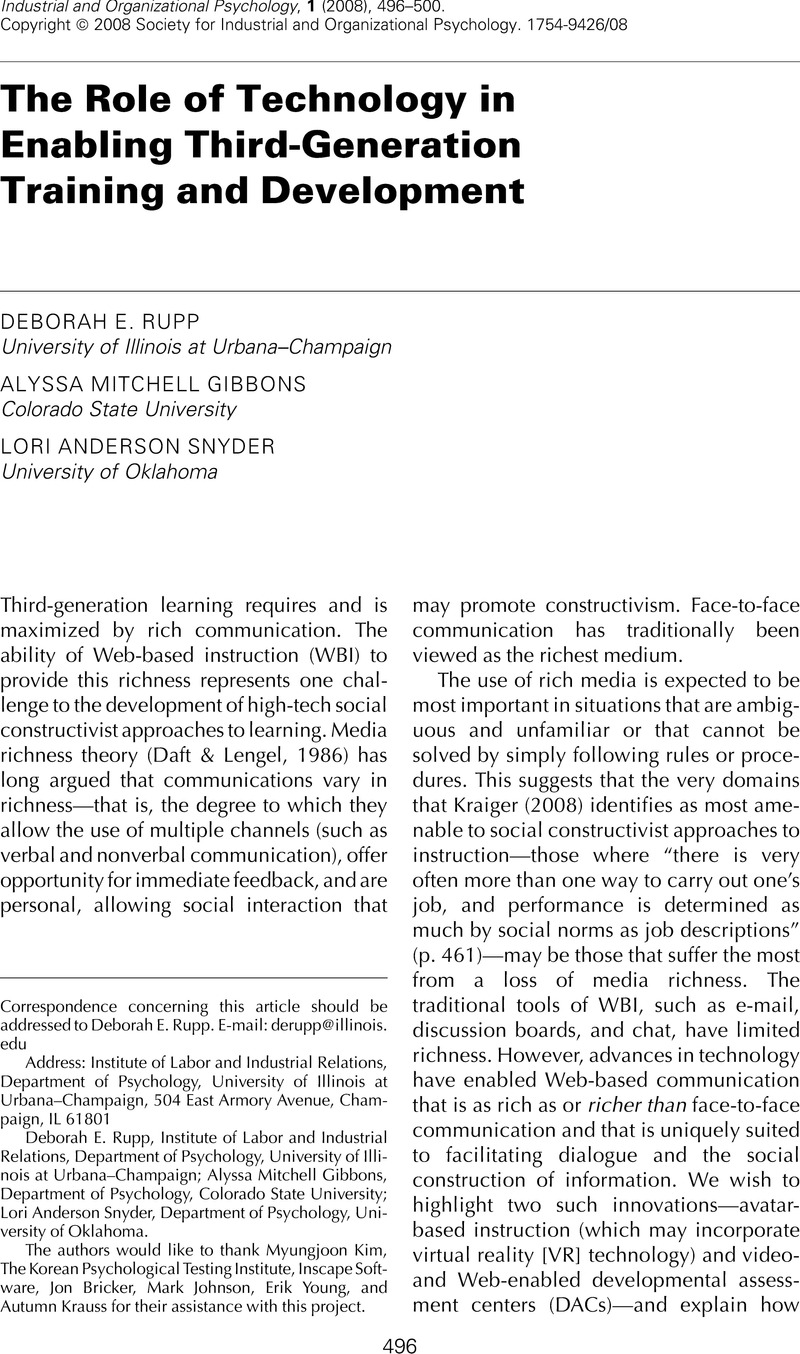Published online by Cambridge University Press: 07 January 2015

Institute of Labor and Industrial Relations, Department of Psychology, University of Illinois at Urbana–Champaign
Department of Psychology, Colorado State University
Department of Psychology, University of Oklahoma
The authors would like to thank Myungjoon Kim, The Korean Psychological Testing Institute, Inscape Software, Jon Bricker, Mark Johnson, Erik Young, and Autumn Krauss for their assistance with this project.